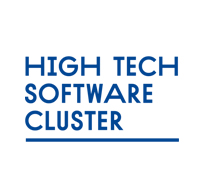Model Driven Engineering: de volgende stap in de softwareontwikkeling

The original approach of developing systems is to make a design in which the clients specifies what requirements need to be made,” Olaf explains. “the designer creates a design from the requirements and the programmer develops the code. But each discipline speaks another language and often the result is not what other persons involved aimed at. In this process all parties that are involved make a lot of assumptions which in the end may prove to be false.”
“This so-called waterfall method is a very linear way of developing software and takes a long time,” Olaf continues. “At the moment a lot of companies already work in a much more agile manner. There are more delivery and testing moments. But it is still a very traditional way of developing systems.”
Working on a central model
Market seems to be ready to adopt Model Driven Engineering
Different set of skills required for Model Driven Engineering
Invest in fine-tuning the central model
Thinking about the essence during a team effort
Olaf regularly puts this new way of working into practice. He recently worked on an MDE project for a large company in the Brainport Eindhoven regionthat was aimed at making a part of the machine that the company produces more sustainable. “At the moment I spend 1,5 day of my time on making others enthusiastic and I spend about two days on developing models, the rest of my time I spend on research. What I like about how the MDE approach has changed my role is that you work with other roles more intensely. It really has become a team effort, interaction is key and you work together closely. Moreover, I love puzzles. When you use MDE you really think about the essence.”
“A long time ago I learned to develop in the traditional manner,” Olaf says. “But somewhere along the way I realized that it is simply not efficient and that it is time for a change. You need to align the process and everyone that is involved. And that is what you do with MDE.”
Real transition in the market is yet to come
“In my role as operations manager I am less involved in technology than Olaf is,” Ronald continues. “ICT is building its network with companies that are also interested in the MDE methodology. You need to collaborate. Software engineers with the right profile are scarce and need to be trained. At ICT Group I hire and coach developers who work with MDE and make sure they are educated properly. Something which is not easy for MDE as there are currently only a few parties that provide proper education. MDE education is still in its infancy.”
“ICT Group invests a lot in Model Driven Engineering,” Ronald says, “but it is still upcoming; the real transition in the market is yet to come. That is why you see that companies start with small pilot projects besides their regular processes and gradually extend the approach. Nevertheless, I believe MDE is going to be the future methodology used for software developing.”
